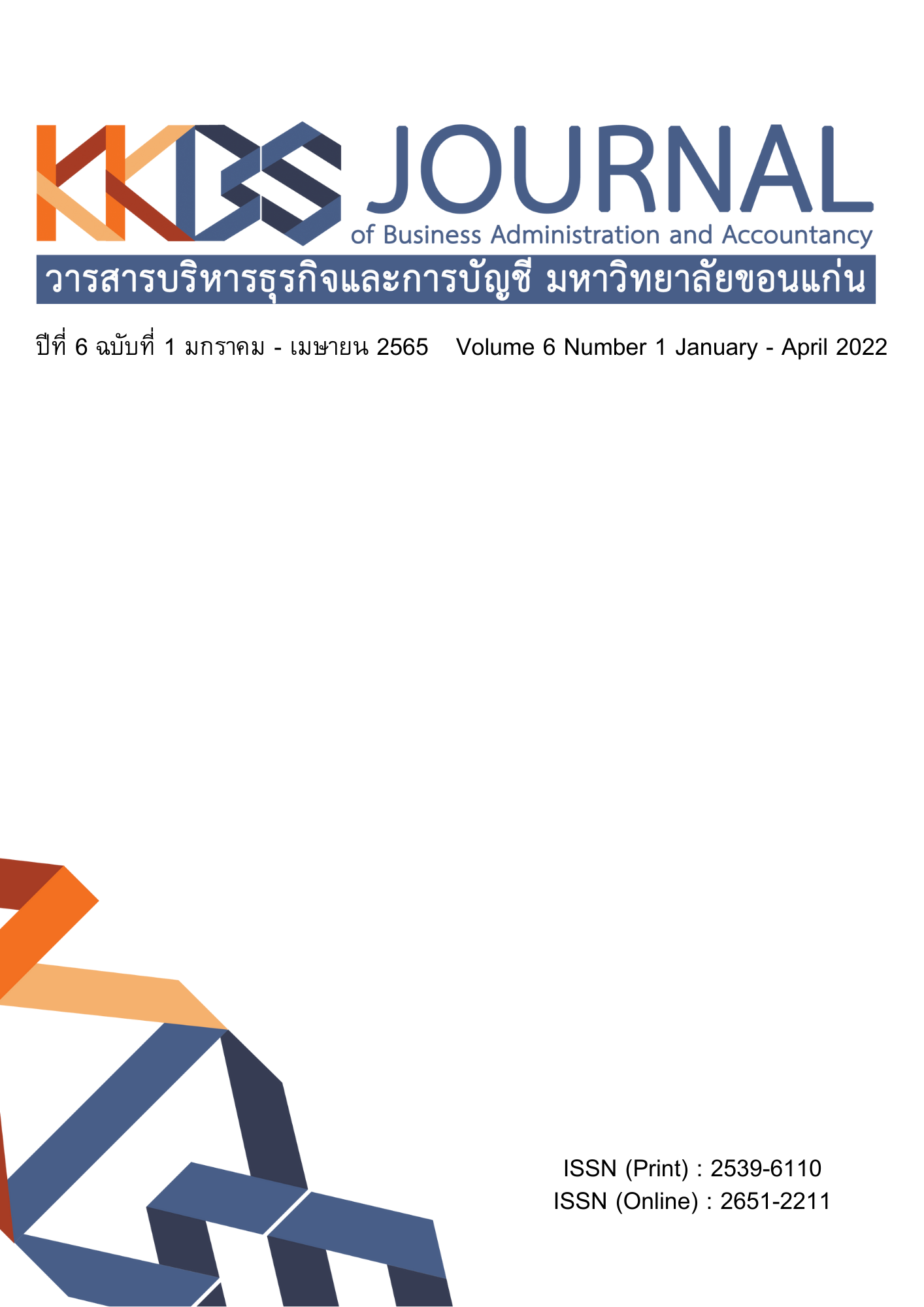Factors Affecting the Development to Become a Green University of Thai Private Universities
Main Article Content
Abstract
The research aimed to study the factors affecting the development to become a green university of Thai private universities. A questionnaire was used to collect data from a sample of 42 private universities in Thailand. MIMIC structural equation analysis was used to test hypotheses. The results found that factors affecting the development to become a green university were policy clarity, executive leadership and vision, personnel participation, monitoring and evaluation, organizational competencies, and external support. All factors can jointly predict 60% of the development to become a green university.
Article Details

This work is licensed under a Creative Commons Attribution-NonCommercial-NoDerivatives 4.0 International License.
The articles published in the journals are the authors' opinions, not the opinion of the editorial team or administrative staff. The articles published is copyright of the Journal of Business Administration and Accounting, Khon Kaen University.
References
Buakhao, T. & Phetcharanont, M. (2012). Policy and strategy format toward green universities a case of Thaksin University, Phatthalung Campus. Journal Faculty of the Architecture, King Mongkut’s Institute of Technology Ladkrabang, 14(1), 40-55. (In Thai)
Byrne, B. (2001). Structural equation modeling with AMOS: Basic concept, application, and programming. Mahwah, NJ.: Lawrence Erlbaum Associate.
Chidchob, T. & Pianthong, N. (2018). The causal model of executive commitment, customer pressure, green purchasing, and business performance of manufacturing industries in Thailand: A review. Executive Journal, 38(1), 79-90. (In Thai)
Cronbach, L.J. (1951). Coefficient alpha and the internal structure of tests. Psychometrika, 16(3), 297-334.
Geng, Y., Xue, B., Liu, K. & Fujita, T. (2013). Creating a “green university” in China: A case of Shenyang University. Journal of Cleaner Production, 61, 13-19.
Hair, J., Black, W., Babin, B. & Anderson, R. (2014). Multivariate data analysis with readings. 7th ed. England: Pearson.
Hambleton, R.K. (1984). Validating the test scores. In R.A. Berk. (Ed). A guide to criterion referenced test construction. (pp.199–223). Baltimore: The Johns Hopkins University Press.
Hungate, B., Koch, G. & Chopin, M. (2007). Greenhouse Gas Emissions at Northern Arizona University: Strategies for Reduced Emissions. Interdisciplinary Approaches to Climate Change Mitigation Spring, 2007.
Kline, R. (2005). Principle and practice of structural equation modeling. New York: Guilford.
Lozano, R. (2010) Diffusion of sustainable development in universities’ curricula: An empirical example from Cardiff University. Journal of Cleaner Production, 18(7), 637-644.
Mongkhonvanit, P., Panklib, T. & Bhalla, S.K. (2015). A Survey of Green University: Challenges and opportunities. International Journal of the Computer, the Internet and Management, 23(2), 20-26.
Mungai, D.N. (2017). Tracking environmental sustainability performance of Public Universities in Kenya. Universal Journal of Educational Research, 5(11), 1869-1877.
Nunnally, J.C. (1967). Psychometric theory. New York: McGraw-Hill.
Office of Natural Resources and Environmental Policy and Planning. (2014). Information system to support strategy. Retrieved December 5, 2019, from https://www.egov.go.th/th/e-government-service/1460/ (In Thai)
Rodtassana. (2015). Green university. HCU Journal, 18(36), 171-187. (In Thai)
Sonetti, G., Lombardi, P. & Chelleri, L. (2015). True green and sustainable university campuses? Toward a clusters approach. Sustainability, 8, 83.
Tiyarattanachai, R. & Hollmann N.M. (2016). Green campus initiative and its impacts on the quality of life of stakeholders in Green and Non-Green campus universities. SpringerPlus, 5, 84.
Tourism Authority of Thailand. (2019). Green business. Retrieved December 5, 2019, from https://7greens.tourismthailand.org/green-content (In Thai)
Tu, J. & Hu, M. (2017). Building on management model of modern green university. Advances in Social Science, Education, and HumanitiesResearch, 155, 391-396.
UI GreenMetric Secretariat. (2018). UI GreenMetric World University Rankings. Retrieved December 5, 2019, from http://www.greenmetric.ui.ac.id/
UI GreenMetric Secretariat, (2020). Overall, rankings 2020. Retrieved November 15, 2020, from http://greenmetric.ui.ac.id/overall-rankings-2020/
USGBC. (2013). The Campus as a living laboratory. Retrieved November 15, 2020, from http://www.centerforgreenschools.org
Wattanathum, S. (2015). Guidelines for the green campus development. Master of Engineering Program in Engineering Management, Siam University. (In Thai)
Xing, X., Wang, J. & Tou, L. (2019). The relationship between green organization identity and corporate environmental performance: The mediating role of sustainability exploration and exploitation innovation. International Journal of Environmental Research and Public Health, 16(921), 1-16.


